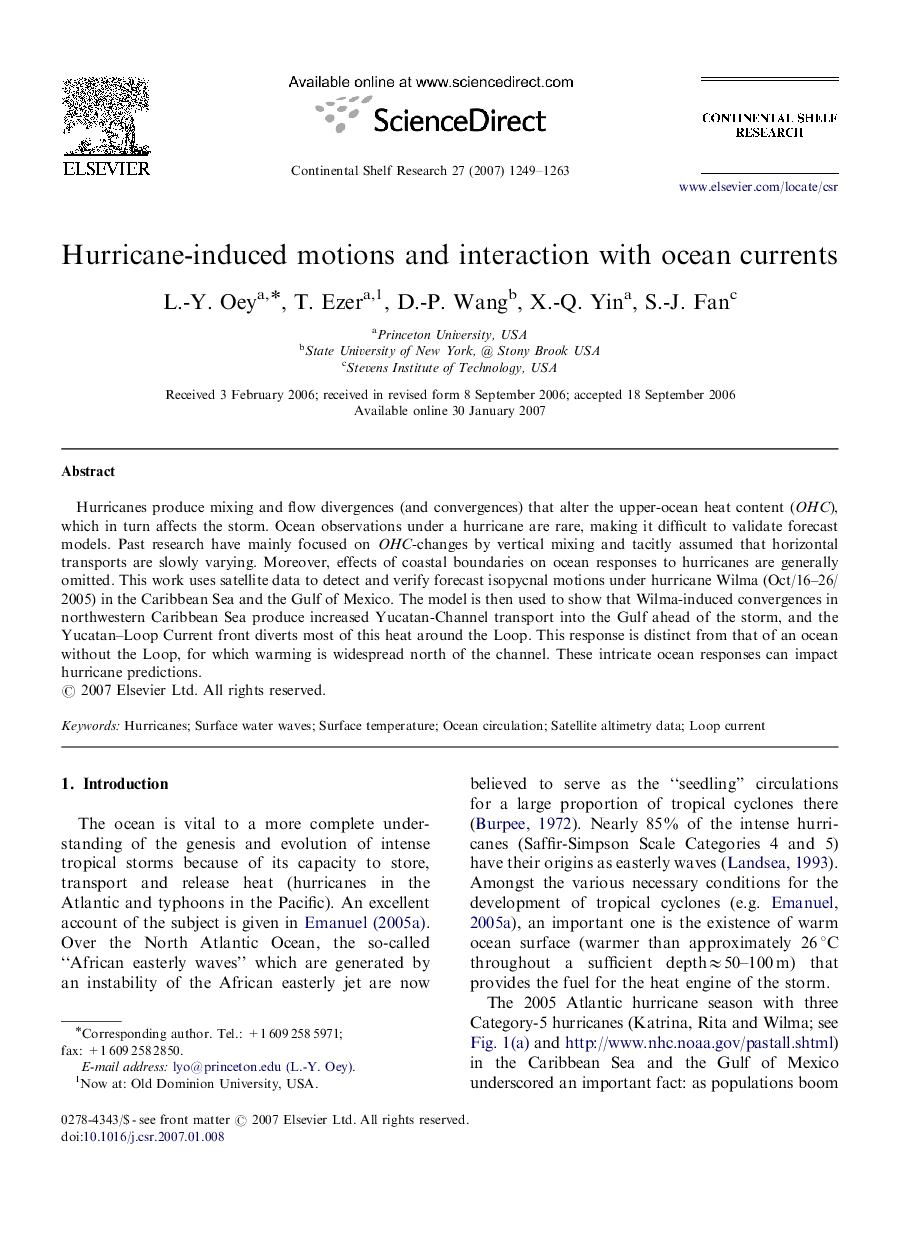| Article ID | Journal | Published Year | Pages | File Type |
|---|---|---|---|---|
| 4533828 | Continental Shelf Research | 2007 | 15 Pages |
Hurricanes produce mixing and flow divergences (and convergences) that alter the upper-ocean heat content (OHC), which in turn affects the storm. Ocean observations under a hurricane are rare, making it difficult to validate forecast models. Past research have mainly focused on OHC-changes by vertical mixing and tacitly assumed that horizontal transports are slowly varying. Moreover, effects of coastal boundaries on ocean responses to hurricanes are generally omitted. This work uses satellite data to detect and verify forecast isopycnal motions under hurricane Wilma (Oct/16–26/2005) in the Caribbean Sea and the Gulf of Mexico. The model is then used to show that Wilma-induced convergences in northwestern Caribbean Sea produce increased Yucatan-Channel transport into the Gulf ahead of the storm, and the Yucatan–Loop Current front diverts most of this heat around the Loop. This response is distinct from that of an ocean without the Loop, for which warming is widespread north of the channel. These intricate ocean responses can impact hurricane predictions.
